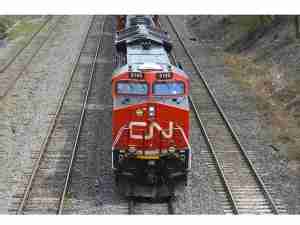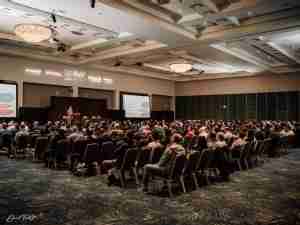US railroad earnings are being squeezed by higher labor costs and weaker sales as a lingering freight recession shows few signs of letting up.
Operating profits at Union Pacific Corp., CSX Corp. and Norfolk Southern Corp. dropped at least 12% in the second quarter compared to a year ago. Those declines likely have peaked, but will continue during the second half, according to analyst estimates compiled by Bloomberg.
“There’s no indications that the market is necessarily picking up,” Kevin Boone, sales and marketing chief for CSX, said on a July 20 conference call. “The question is how quickly the market recovers, and that will be heavily relying on the consumer and how that pans out into the holiday season.”
Consumers are spending more on services and pulling back on buying shipped goods, a trend laid bare by a 22% decline in imported cargo handled by major US ports during the first six months of the year. That carload weakness has accelerated during the first three weeks of the third quarter to a 6% drop — compared with a 5% decline in the second quarter, according to weekly reports from the Association of American Railroads.
Norfolk Southern on Thursday reported adjusted earnings per share of $2.95 for the three months to June 30, below an analyst consensus estimate for $3.13 and the $3.45 it earned last year. The company more than doubled charges related to a February derailment in East Palestine, Ohio, that led to the release of toxic chemicals.
It took a $387 million clean-up charge in the first quarter and another $416 million in the second quarter.

Elevated Labor Costs
The industry-wide squeeze stems mainly from a union labor contract concluded in December that included wage increases, bonuses and new work rules requiring more employees. To calm worker anger over the contract, which was imposed by Congress and the White House after a months-long impasse, railroads have offered extra benefits, including paid sick days.
Union Pacific saw its compensation expenses jump 16% while Norfolk Southern’s surged 13% in the second quarter.
With compensation costs rising, Union Pacific’s sales and marketing team “is tasked now to get out there and make sure that we recoup that,” Lance Fritz, who will step down as the company’s chief executive officer in August, said on a July 26 conference call. “We are confident that we can continue to price above inflation.”
The railroads have refrained from their past practice of furloughing workers to cut costs when volumes drop. Those furloughs often caused rail service to deteriorate when volumes rebounded, catching railroads with too few workers.
Lower margins also reflect fewer charges levied for storing customers’ railcars when supply-chain snags led to backlogs.
Still, railroad earnings haven’t tumbled as much as trucking companies’, which are grappling with steep drops for both cargo prices and volume. That’s because no new major railroads are being built in the US and the rail operators have enough captive customers to raise prices even when demand is weak.
Union Pacific’s shares have climbed 15% this year through Wednesday’s close, while CSX has gained 6.4%. That trails the 19% gain in the S&P 500 Index. Norfolk Southern fell 3.9% over the same period.










